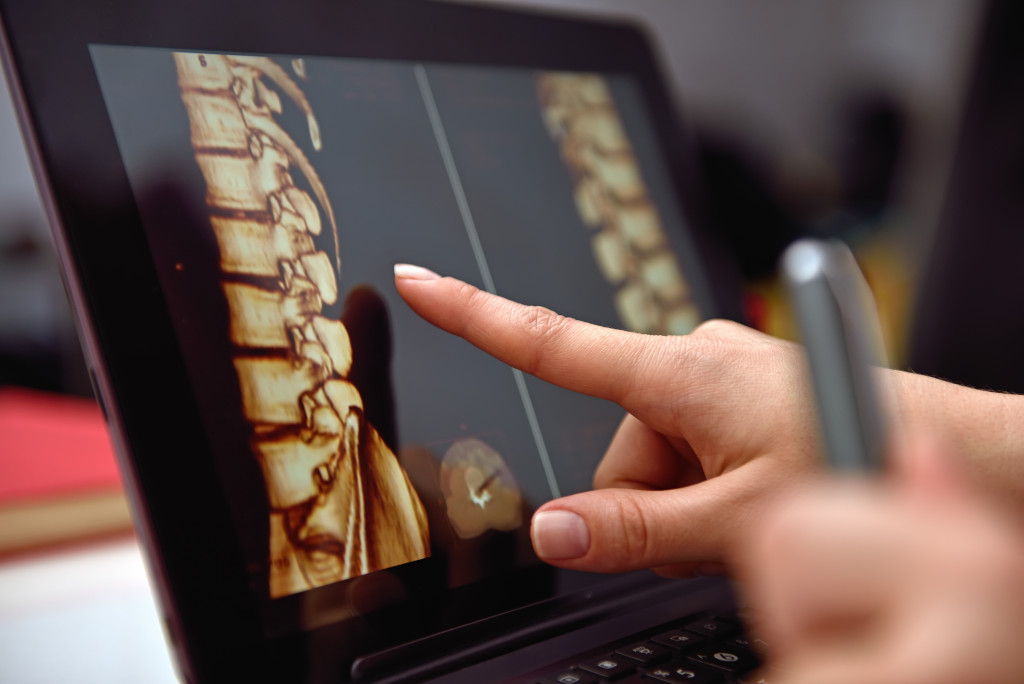Some of the most worrying and disruptive injuries and pain that we experience are situated in the back and spine, and often call for a hospital visit. Many among us find hospitals and everything they represent extremely daunting. It is not unusual to worry about your upcoming appointment and investigation. Having an idea of what your visit will entail, and knowing possible tests and procedures to expect may help put you at ease.
Back pain tends to affect our mobility, comfort, ability to sleep and go about our daily routines. It could also potentially be the tip of the iceberg of a much more complicated musculoskeletal or neurological issue. For this reason, it is important to follow the advice of doctors regarding treatment as well.
A hospital visit for the purpose of investigating back pain or a spine issue will start with a consultation. During this, the doctor (most likely a rheumatologist or an orthopedist) will physically examine your back. They will test your ability to sit, stand, and walk. It may simply be a sprain that needs rest and at-home convalescence involving physiotherapeutic exercises and over-the-counter pain relief.
However, if your back pain is persistent and cannot be treated at home, to rule out any such serious medical conditions, some tests may be necessary. Aside from the regular tests such as blood tests, blood pressure, and weight check, the doctor may advise an imaging scan. Blood tests could rule out rheumatoid factors, vitamin D deficiencies, and other common ailments. If these tests are not conclusive as to why you are in pain, an imaging scan such as an MRI or CT scan will then be ordered.
The idea of undergoing an imaging scan can be scary, especially if this is your first time. You may have seen the large, sterile, beeping machines on TV and think that it is not for you. But preparing for these scans could be key in ensuring a smooth process and less anxiety for yourself.
CT Scans
A computerized axial tomography, or CAT scan as it is sometimes called, produces multiple cross-sectional images of the body, which can be viewed from different angles or even 3D printed. A CT scan can identify issues in different organs and soft tissues as well. Often, a radiopaque contrast material like Isovue 370 is injected intravenously, which absorbs the directed radiation in order to highlight non-bony tissues.

To prepare for a CT scan, you may need to change into a hospital robe, take off your glasses, jewelry and hairpins, and leave your phone outside as metal objects may interfere with the imaging. If you are anxious about needles, it would help you prepare for this. The contrast material may make you feel flushed and warm, or leave a metallic taste in your mouth, but take comfort in that this will quickly pass. The test itself lasts only a few minutes, but you may experience some discomfort from lying still for that period. Sometimes, the scan bed may move in the duration of the test.
X-Rays
X-rays are usually used when investigating what might be a bone or joint issue and are familiar to most people. There is less radiation involved with x-rays as compared to CT scans. However, they can be unhelpful in diagnosing problems with soft tissue or nerves. Usually, there are no loud sounds to be aware of, and they take only a few minutes. Similar to CT scans, you will need to remove all metal objects, and wear either loose clothing or a hospital gown.
MRIs
Magnetic resonance imaging or MRI is similar to the CT scan in the way that they produce multiple images and show soft tissue problems. Unlike CT scans, it does not use radiation. Instead, the images are produced using a constant magnetic field that surrounds you. Radio waves are then bounced off your fat cells and the water molecules within your body, thereby rendering images of the tissue and organs.
It is especially vital to remove metal objects before an MRI as the magnetic field could attract them, causing injury. You will also need to inform the technician of any medical implants such as cochlear implants and insulin pumps. MRIs are quite loud, which may be distressing to some patients. You can prepare by bringing earplugs. The machine can also trigger claustrophobia and anxiety. Watching videos and walkthroughs of MRI procedures prior to your appointment may help you familiarize yourself with the process and ease some of your anxiety. The length of the procedure may last anywhere from between 15 and 90 minutes, so be ready to be in there for a while. You will be provided with an emergency button to press or squeeze if you find it too overwhelming and need to alert the technician.
Dealing with debilitating back pain can be hard, with a long diagnostic process. If you educate yourself on what scans and procedures you will need to undertake, your diagnosis journey can be a lot less stressful. Speaking to your doctor is always a good idea when getting ready for each step of this journey.
